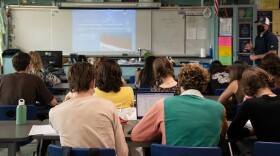Henry Baisden has coached free tennis lessons at Colina Del Sol Recreation Center in City Heights since the 2000s. He’s noticed a decline in the upkeep of the space.
“The area manager sometimes he comes and requests me if there’s a net that needs to be put up and they don't have the staff to do it," Baisden said. "I put the nets up, I clean the courts after every class.”
The Performance Audit of Equity in Recreation Programming audit released Nov. 1 found recreation centers in San Diego’s northern neighborhoods get more funding, host more activities and attract more participants than rec centers in the southern part of the city.
RELATED: Community Support Navigators Aim To Give City Heights Hope During Difficult Times
The report will be presented to the city of San Diego's audit committee Wednesday. It said the city’s Parks and Recreation Department contributes to that inequity problem by poorly handling low-income fee waivers and by not publishing promotional materials often enough in languages other than English.

The largest disparities are coming from contracted programs, which participants pay for out of pocket, City Auditor Andy Hanau said
“These contracted programs exist almost exclusively in the northern areas of the city,” he said. “We recommend the City look at expanding these contracted programs to southern areas of the city and consider extending fee waivers or reductions to people who may not have the ability to pay the full cost of these programs.”
That survey also found most of the 27 city parks in poor condition are in low-income or middle-income areas, not wealthy parts of the city.
The lack of nearby noise or improved maintenance of the courts at other recreation centers are very apparent for Baisden’s tennis students when they travel to play in tournaments.
“I explain to them that: pay attention to where you are, where you come from," he said. "When you go outside of your facility, compare the situation.”





